by Mohandas K. Gandhi

“Soul Force”; courtesy kurdistancommentary.wordpress.com
Editor’s Preface: We have periodically revisited Gandhi’s own definitions of his major concepts. Through compilations of various of his statements, and by using quotes from his work at the top of our Home page, and found under Quotes & Sources, we hope to provide focal points for discussion, if not statements of doctrine. Please also see the note at the end for acknowledgments. JG
My goal is friendship with the world and I can combine the greatest love with the greatest opposition to wrong. (Young India, 10 March 1920; p. 5)
Non-violence is not a resignation from all real fighting against wickedness. On the contrary, the Non-violence of my conception is a more active and more real fighting against wickedness than retaliation, whose very nature is to increase wickedness. I contemplate a mental and therefore a moral opposition to immoralities. I seek entirely to blunt the edge of the tyrant’s sword, not by putting up against it a sharper-edged weapon but by disappointing his expectation that I would be offering physical resistance. The resistance of the soul that I should offer instead would elude him. It would at first dazzle him and at last compel recognition from him, which recognition would not humiliate him but would uplift him. (Young India, 8 October 1925; p. 346)
Read the rest of this article »
by E. S. Reddy
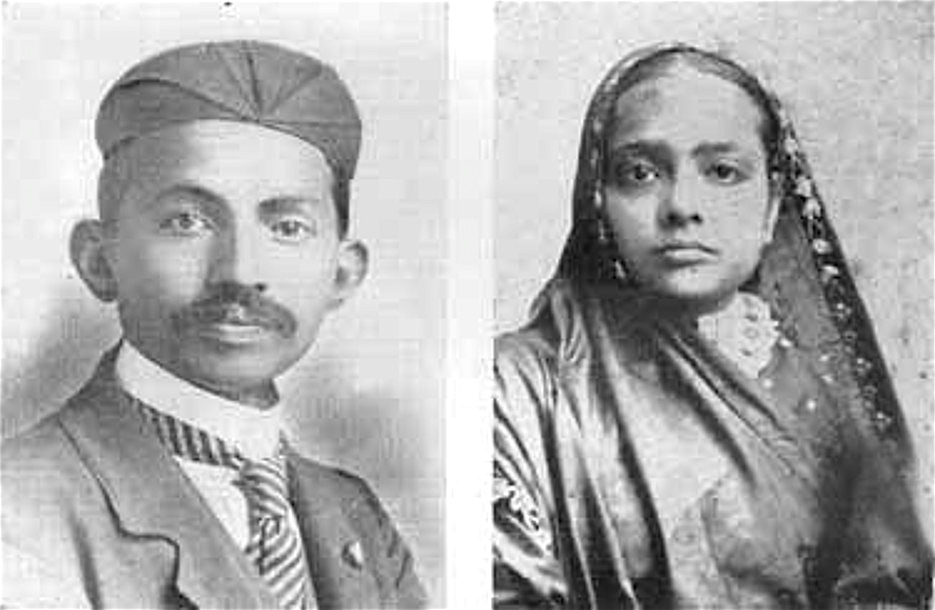
Portraits of Mohandas and Kasturba Gandhi at the time of the South African campaign; courtesy en.wikipedia.org
Editor’s Preface: We have posted several articles on significant figures in the Satyagraha movement, other than Mahatma Gandhi. We have also featured articles on women nonviolence leaders such as Vandana Shiva and Dorothy Day. This article concentrates on the role Gandhi’s wife, Kasturba Gandhi (1869–1944), played in the South African satyagraha campaign. Please also see the note at the end for biographical information about the author, and acknowledgments. JG
Kasturba Gandhi by her “silent suffering” as a prisoner sentenced in 1913 to three months rigorous imprisonment, made a crucial contribution to the success of the nonviolence civil resistance campaign (satyagraha) in South Africa, but this is little known.
In early 1913, when satyagraha in the Transvaal had been suspended, Justice Malcolm Searle of the Cape Supreme Court ruled that marriages performed according to a religion which allowed polygamy – that is, all Muslim and Hindu marriages – would not be recognised in South Africa. If this ruling had prevailed, almost all married Indian women would have been reduced legally to the status of concubines and their children treated as illegitimate. The women and children would have lost the right of inheritance and the right to enter South Africa. The government ignored repeated appeals from the community for legislation to remedy the situation.
Read the rest of this article »
by Henry S. L. Polak
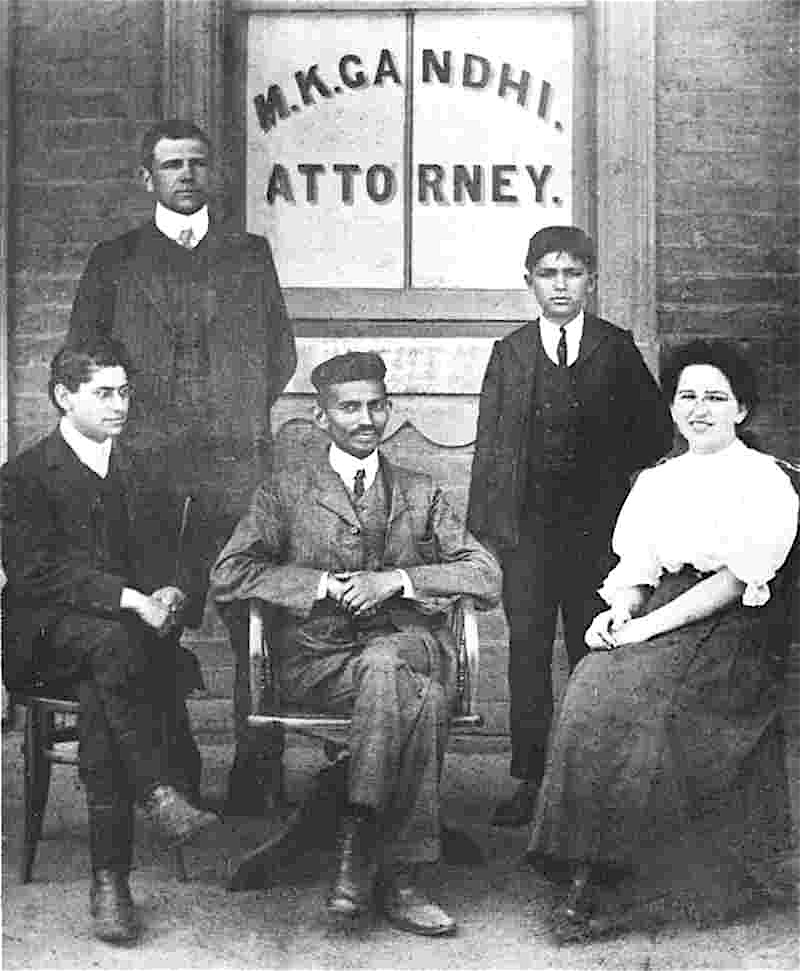
Gandhi in front of his Johannesburg law office, 1905, with Henry Polak (left), Sonia Schlesin; others unidentified.
Editor’s Preface: This 1949 article by Polak is often cited as a primary source of information about Gandhi’s South African years and the events surrounding Gandhi’s coining of the term, “Satyagraha”. Henry S. L. Polak edited Indian Opinion, which he co-founded with Gandhi and is credited with giving Gandhi a copy of Ruskin’s Unto This Last, which Gandhi cites as one of his most important influences. For further biographical and textual information please see the notes at the end. JG
Mahatma Gandhi’s technique of Satyagraha, or, as it was first known, Passive Resistance, had its origins in South Africa. It was in 1906, twelve years after Gandhi’s arrival there, that the flame of Satyagraha began to glow. Until then, the Indian grievances had been dealt with in the usual orthodox ways of petitions, memoranda, addresses, questions in Parliament, public speeches, and so on. But the time had now arrived when, all these having proved fruitless, new and radical methods had to be devised, their consequences considered, and redress thereby determined upon, at whatever cost to those suffering under social, economic, and political disabilities that must no longer be tolerated.
Read the rest of this article »
by Rajendra Prasad
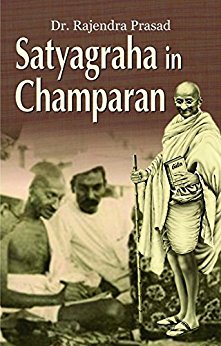
Dustwrapper art courtesy Ocean Books; oceanbooks.in
Editor’s Preface: The historical accounts of the Indian nonviolent independence movement generally focus on Mahatma Gandhi’s campaigns, whereas the Satyagraha Movement was widespread across India, with more than one leader. Rajendra Prasad (1884-1963) was one such. The account that follows draws a vivid picture of the courage and sacrifice of the campaign that Prasad led in 1930 in his home state of Bihar. His leadership qualities and commitment to nonviolence were well recognized; when India gained independence from Great Britain in 1947 he was chosen its first president. Please see our explanatory endnotes, note on the text, and editor’s note at the end of the article. JG
An outstanding example of the faith and firmness with which people acted on Mahatma Gandhi’s words was provided, in 1930, at Bihpur in Bhagalpur. (1) Bihpur is on the banks of the Ganges and is exposed to floods. The river always changes its course, as happens in all places near the Ganges. As a consequence, the boundaries marking off one man’s field from another’s are washed away, and when the floods subside, very often conflicts arise among rival claimants of land. […]
When I was touring that region in 1929, I found evidence of great enthusiasm among the people. I was convinced that when Satyagraha was started, its inhabitants would enthusiastically participate in it. I carried this impression because of an incident which occurred there. In the course of my tour, I had fixed up a meeting to be held at a particular place about two o’clock in the afternoon. I had been to another village at some distance from the place where the meeting was to be held, and had hoped to return in time for it. While I was on my way back, heavy rain came down suddenly, a strong wind began to blow, and I was delayed for two or three hours. When I arrived, soaked to the skin, I found a very big crowd which, I was told, had been awaiting my arrival in the rain for some hours. The rain itself was still falling. I stood up in the crowd in the rain and talked to them. It was this incident which impressed itself on my mind that the people of that region had courage as well as determination.
Read the rest of this article »
by Mohandas K. Gandhi
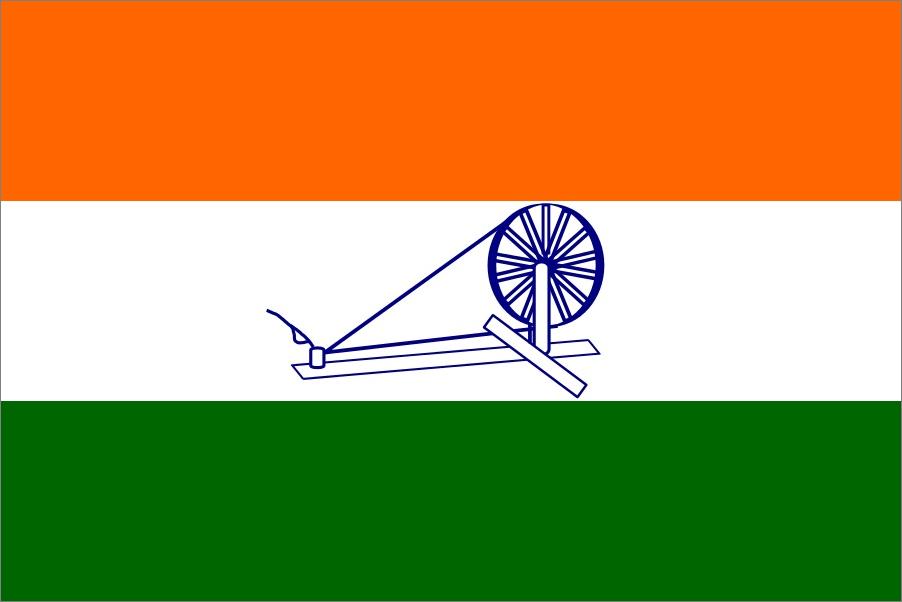
1929 proposed flag of India, with Gandhian spinning wheel; courtesy en.wikipedia.org
Editor’s Preface: The Indian National Congress formally approved “The Declaration of the Independence of India” on December 19, 1929, and it is important to understand it in its historical context. (1) Purna swaraj can be translated as “complete, sovereign independence,” that is, Indian independence from Great Britain and the ending of colonial rule. Various models had been proposed for Indian sovereignty prior to 1930, including several versions of power sharing. However, a sequence of events by the British government, violating or curtailing Indian civil rights, resounded as a betrayal to Gandhi. The “Declaration” marks a turning point in Gandhi’s thinking about Britain, and the nature of India’s future relationship with British rule. (2) There has been some disagreement as to its authorship, but Gandhi can be said to have solved the matter in February 1937 when he wrote,“ I was its author. I wanted the people not merely to repeat the mantra of independence but to educate the people as to its why and wherefore.” (3) Purna Swaraj was to be read throughout the country on January 26, 1930, and that date is still celebrated as India Independence Day. Please also see our explanatory notes at the end. JG
Purna Swaraj
We believe that it is the inalienable right of the Indian people, as of any other people, to have freedom and to enjoy the fruits of their toil and have the necessities of life, so that they may have full opportunities of growth. We believe also that if any government deprives a people of these rights and oppresses them the people have a further right to alter it or to abolish it. The British Government in India has not only deprived the Indian people of their freedom but has based itself on the exploitation of the masses, and has ruined India economically, politically, culturally, and spiritually. We believe, therefore, that India must sever the British connection and attain Purna Swaraj, or complete independence.
Read the rest of this article »
by Mark Engler and Paul Engler
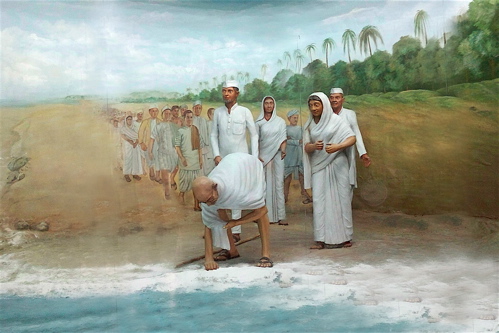
“Gandhi Takes Salt”; Sabarmati Ashram mural photo courtesy blogeswara.wordpress.com
At the end of 1930, India was experiencing disruption on a scale not seen in nearly three quarters of a century — and it was witnessing a level of social movement participation that organizers who challenge undemocratic regimes usually only dream of achieving.
A campaign of mass non-cooperation against imperial rule had spread throughout the country, initiated earlier that year when Mohandas Gandhi and approximately 80 followers from his religious community set out on a Salt March protesting the British monopoly on the mineral. Before the campaign was through, more than 60,000 people would be arrested, with as many as 29,000 proudly filling the jails at one time. Among their ranks were many of the most prominent figures from the Indian National Congress, including politicians that had once been reluctant to support nonviolent direct action.
Read the rest of this article »
by Richard B. Gregg
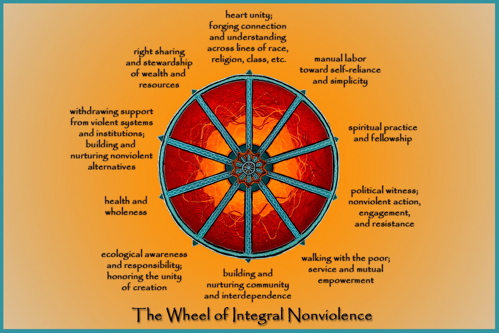
The Wheel of Integral Non-violence is courtesy of chico-peace.org
Editor’s Preface: This 1941 article, with its Foreword by Gandhi, continues our series of important historical documents on the theory and history of Gandhian nonviolence. Gregg here argues for the value of manual labor, as advocated by John Ruskin, and as practiced by Gandhi in his ashrams, where Gregg had lived. Gandhi considered spinning and weaving essential to the routine of a nonviolent community, yet this article is one of the very few to try to explicate this. Please also see the Editor’s Note at the end for more information about Gregg, and please also consult his other article, which we have posted here. JG
Foreword (by M. K. Gandhi): ‘A Discipline for Non-violence’ is a pamphlet written by Mr. Richard B. Gregg for the guidance of those Westerners who endeavour to follow the law of Satyagraha. I use the word advisedly instead of ‘pacifism’. For what passes under the name of pacifism is not the same as Satyagraha. Mr. Gregg is a most diligent and methodical worker. He had first-hand knowledge of Satyagraha, having lived in India and then too for nearly a year in the Sabarmati Ashram. His pamphlet is seasonable and cannot fail to help the Satyagrahis of India. For though the pamphlet is written in a manner attractive for the West, the substance is the same for both the Western and the Eastern Satyagrahi. A cheap edition of the pamphlet is therefore being printed locally for the benefit of Indian readers in the hope that many will make use of it and profit by it. A special responsibility rests upon the shoulders of Indian Satyagrahis, for Mr Gregg has based the pamphlet on his observation of the working of Satyagraha in India. However admirable this guide of Mr. Gregg’s may appear as a well-arranged code, it must fail in its purpose if the Indian experiment fails. (Sevagram, 24-8-1941)
A Discipline for Non-violence
For ages military discipline has won and held men’s faith. However crude, indiscriminate, and brief may be the results of organized violence, the world still has immense respect for its show of firmness and order. Much as we dislike war, when we begin to ask how we can attain justice and peace, we come face to face with this power of the military method. What is the secret of this power? Does it lie merely in men’s fear of violence?
Read the rest of this article »
by Thomas Weber
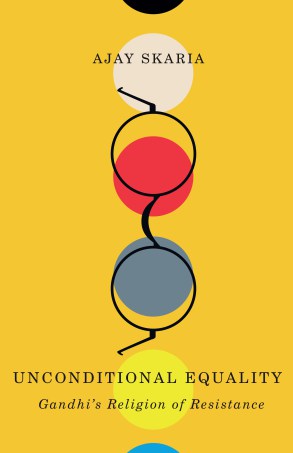
Cover art courtesy University of Minnesota Press; upress.umn.edu
As a university student with an interest in existential philosophy, I remember struggling with Jean-Paul Sartre’s Being and Nothingness. At times there were even consecutive pages that made sense to me, but more often there were only single paragraphs separated by many pages of dense language and philosophical concepts that were beyond my comprehension. I was very thankful when I came across Sartre’s essay “Humanism as an Existentialism” and suddenly what he was trying to say came into focus and made sense. How much I lost by not comprehending the probably profounder text, I will never know. Readers of some of the latest scholarly offerings in the attempts to understand the life and thought of Mohandas Karamchand Gandhi may find themselves in a similar position while waiting for the simpler more readily graspable versions to materialise. But then, weighty philosophical concepts are weighty philosophical concepts and possibly they are not meant for a wider audience that has little desire or ability to engage in deep theoretical philosophical discourse.
Once, writings about Gandhi were biographies, often hagiographical (for example by Louis Fischer); personal reminiscences, usually hagiographical (for example by his most well known British disciple Mirabehn); and selections of the Mahatma’s thoughts grouped in various categories, generally selected by those who were followers (R.K.Prabhu and U.R.Rao, Anand Hingorani, N.K.Bose and Krishna Kripalani come to mind). Of course there were serious attempts at analysing Gandhi’s campaigns through primary archival sources (for example by Judith Brown) and more probing attempts to make sense of his world view and what led him to have it (here one could list Gopinath Dhawan, T.K.N.Unnithan and Erik Erikson). During 1969, the Gandhi birth centenary year, dozens of books appeared. More recently, although there was the occasional controversy (particularly over the writings of James Lelyveld and Jad Adams), it has become almost fashionable to ensure that Gandhi scholarship can in no way be seen as hagiographical, with writers doing their utmost to undermine the “myth of the Mahatma”, by pointing out Gandhi’s inconsistencies, his youthful elitist and even racist attitudes (for example by Desai and Vahed), his older-age, controversial experiments in sexuality, and even labelling him as a traitor in the project of the creation of modern India (too many to mention). Even more recently, however, there has been another trend where scholars with a strong theoretical bent and deep philosophical knowledge have taken the Mahatma seriously and decided to turn their attention to his life and an analysis of his praxis (and here we could mention the writings of Vinay Lal, Faisal Devji, Isabel Hofmeyr and Tridip Suhrud among a growing cohort). Ajay Skaria’s Unconditional Equality: Gandhi’s Religion of Resistance (Minneapolis: University of Minnesota Press, 2016) is a prime example of this development.
Read the rest of this article »
by Tallessyn Z. Grenfell-Lee
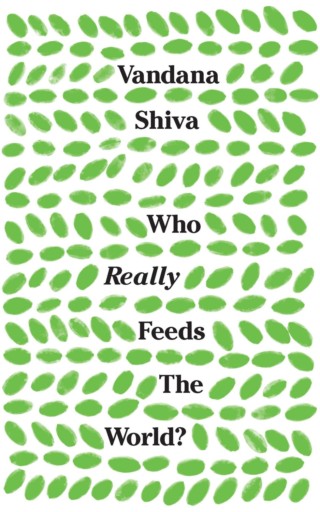
Book cover art courtesy zedbooks.net
Humanity will always have a few basic needs: clothing, shelter, food. In the early 1900s, Gandhi saw clearly how imperialist colonialism had hijacked India’s sovereignty along with its ability to clothe itself, and he inspired a nation to reclaim the right to spin its own cloth. The people embraced homespun khadi and the spinning wheel, not only for their practical utility in reestablishing the independent foundation for a local economy, but for their deep symbolic significance in resisting the oppressive forces of racism, sexism, and classism perpetuated by imperialistic greed.
In her book Who Really Feeds the World (London: Zed Books, 2016) Vandana Shiva describes how India is again reclaiming another of humanity’s elemental needs from equally rapacious forces: the ability and right for a community to feed itself. This time, the symbol of communal empowerment is the humble seed, and Shiva’s Navdanya movement urges all Indians – and all peoples – to plant diverse seeds on every plot and balcony as a way to resist and reclaim food and seed sovereignty. Navdanya follows in the footsteps of Gandhi, employing Seed Satyagraha, or non-cooperation, to resist laws and policies that would allow large, trans-national corporations not only to convert local farms to industrialized, chemical-intensive practices, but also to outlaw ancient practices such as seed saving and sharing.
Read the rest of this article »
by Richard Ricketts
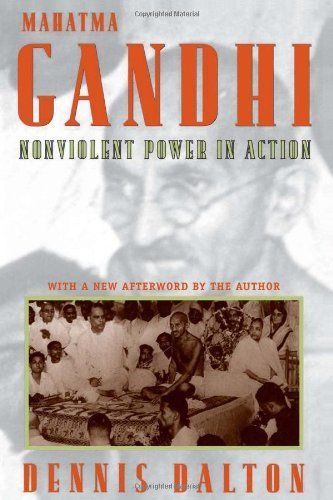
Dustwrapper art courtesy cup.columbia.edu.
Editor’s Preface: Dennis Dalton is Ann Whitney Olin Professor Emeritus of Political Science at Barnard College, Columbia University, and a leading authority on Gandhi and civil resistance. Please see the note at the end for bibliographical information, and acknowledgments. JG
Richard Ricketts: Do you see resistance to Peace Studies as a field of study?
Dennis Dalton: That is a hard question. Many universities have institutes and centers that incorporate the word “peace,” such as the Institute of War and Peace at Columbia, but all they typically study is the war side of the equation. Peace is seen as a passive phenomenon, as an absence of war, so it is thought that there is nothing there to study.
I suspect this line of thinking is encouraged, in part, by the large grants that are provided from the Department of Defense. Columbia, for example, has traditionally been funded very liberally by the Defense Department and the money is just not there for peace studies. That is why I was really interested in this program at Arizona State University. The founder of the program Ann Hardt was really committed to peace and peace studies. You need someone like that who can fund these types of programs.
When I went to the instruction/education board meetings [at Columbia], I was told the subject was academically soft, not rigorous enough. What they meant was that they deemed pacifism as a weak, effeminate subject.
Read the rest of this article »














